

There are billions of individuals living on this third rock from the sun. The term ‘individual’ was intentional to signify that if you arbitrarily picked a handful of people from a crowd, all of them are likely to have individual characteristics that set them apart from one another.
The same should be true for sending email campaigns.
If you want to stand out from the countless other emails your customers receive, it’s important for your emails to have an ‘individual’ personality to stand out from the crowd.
How to “create” your brand personality
Brand personality is defined by the emotional characteristics you use to connect customers with your product or service, as well as your company in particular. Most brands tend to align their brand personality to mirror their target audience base and that is your number one email marketing tip.
Your brand personality should come from the answers to these questions:
- Who is your target audience?
- What elements and references do they relate to?
- What are the common traits that tie them together?
- How do they use and relate to your products or service?
Next step is to identify what emotions you want your brand to convey. Read the following 3 statements:
- “Feel free to share your feedback.”
- “Mom always said that it’s important to listen to feedback, so we’d love to hear yours.”
- “Your feedback would be very helpful in helping us improve our services.”
Did you experience the 3 different emotions being conveyed through these statements? For a clear brand personality, it’s important to identify the tone and emotions that your emails will communicate.


In the above email, Spartan created a brand identity of extreme athleticism and discipline with the help of their email copy.
Some brands also consider telling their story as a part of the brand personality.


National Dry Goods communicates their brand story in their welcome email itself to allow subscribers to better relate to their company.
Another crucial step to creating a relatable and recognizable brand identity is establishing a consistent experience across all of the different channels.
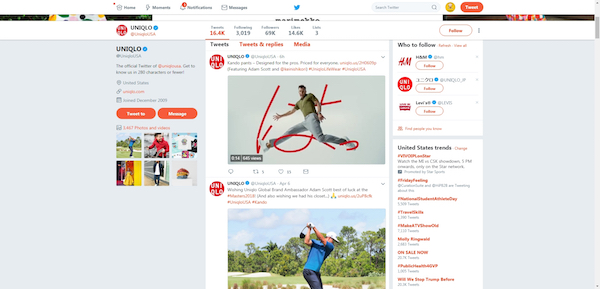
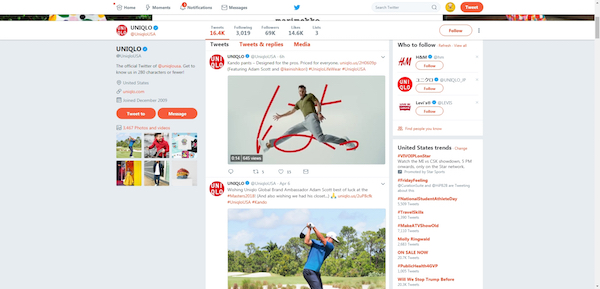
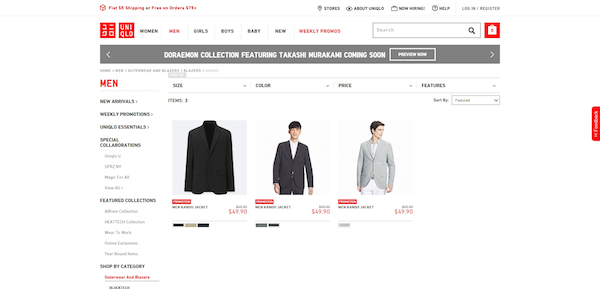
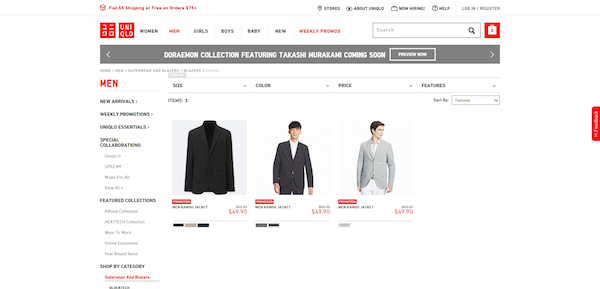
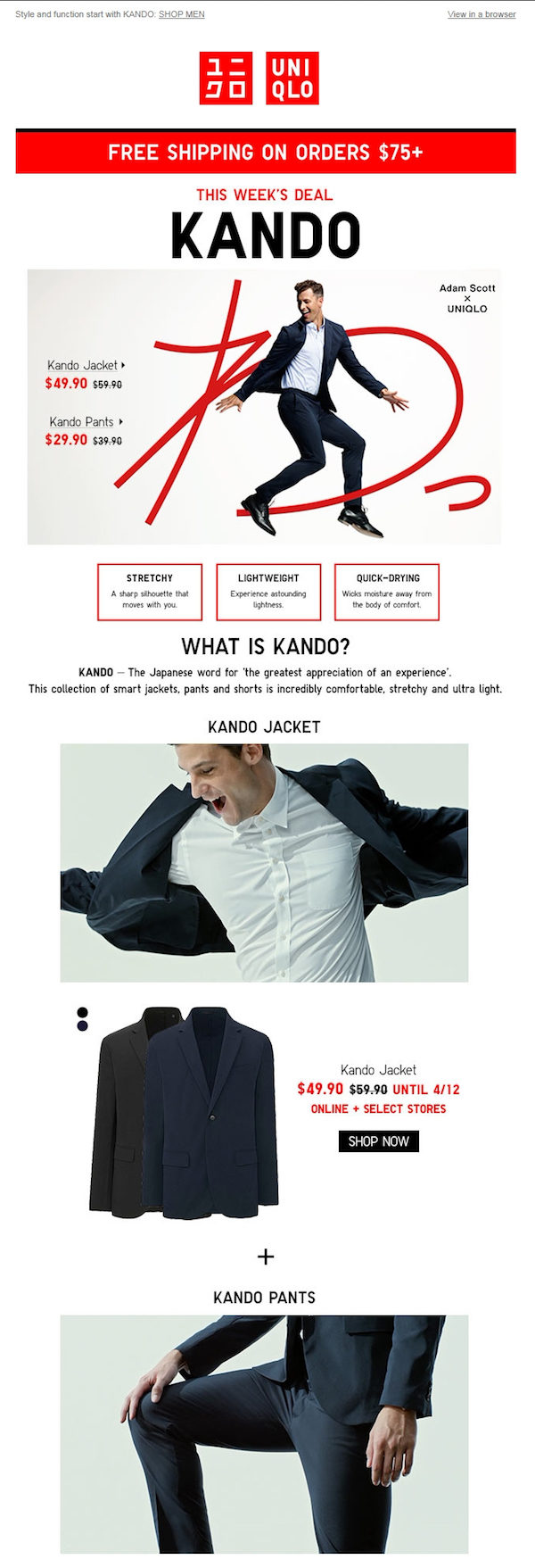
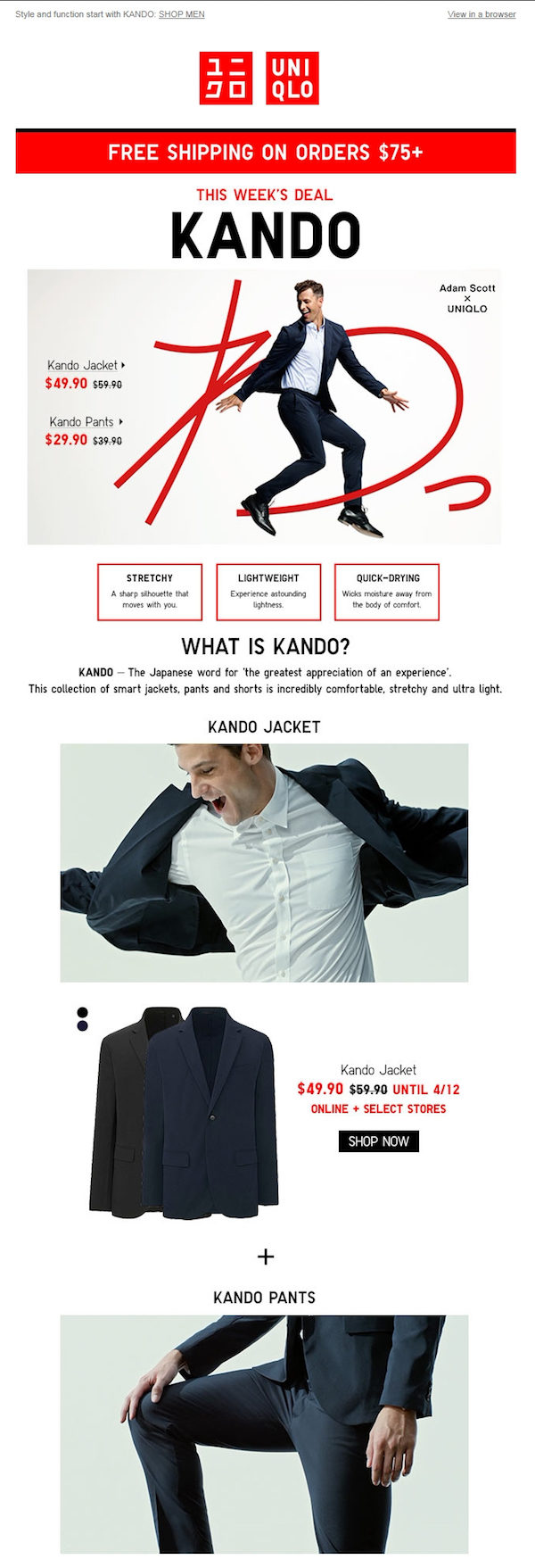
In the above example, Uniqlo’s email, Landing page, and Twitter page all have consistent elements to make the easy association between the different mediums and matching it with the brand.
What are the components that define brand personality
Brand identity is mostly based on visual elements in an email. The most important components include:
Logo
The logo is the first design element that a subscriber observes when they open an email and it is the component with which contacts will most associate your brand. Therefore, including your brand logo at the top of every email is a must.






Free People likes to experiment with different font styles and color but they always have their brand logo at the top for easy recognition.
Color palette
Each color conveys an emotion and as we discussed earlier, emotions are an integral step in creating a brand personality. Most brands tend to use their own brand color scheme in emails to increase the recognition factor even more. Some fashion brands will also adjust colors based on the season. No matter which style you choose, it’s important to choose a color palette that matches your desired tone.
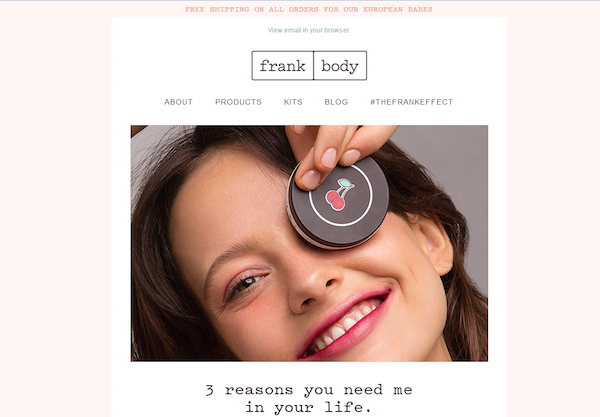

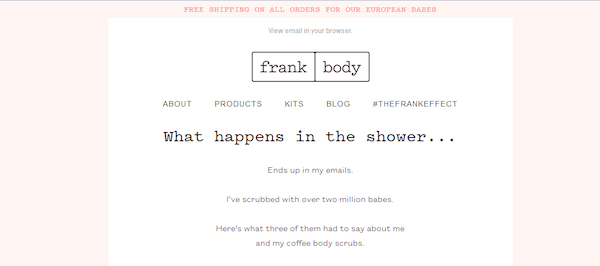
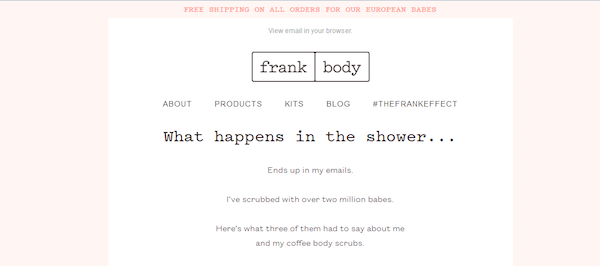
Frank Body uses a constant color palette of peach, pink, brown and black in all their emails. This is not just restricted to the background and font colors but also to the images they use.
Typography
At times, the font and formatting you choose can be just as important as the actual content of your email. While most subscribers prefer left-aligned text, emails with small paragraphs that are center aligned are preferable as it reduces eye strain. Moreover, the font size is also important for creating a specific experience for your readers.
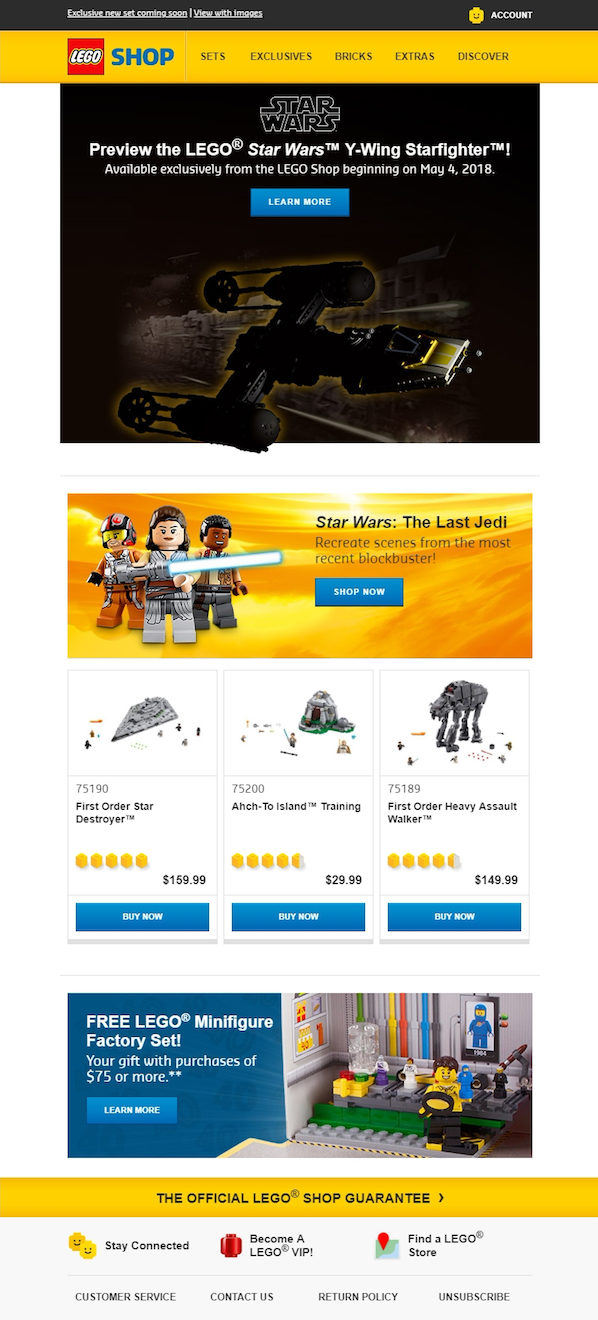

In the above email, Lego has followed the principles of visual hierarchy by using proper heading and text formatting. That makes the email easier to read.
Photography/graphics
Visual media can also be considered a part of your brand personality. In the example below, Dropbox always uses hand-drawn illustration to signify a fun-loving brand.


What are the different types of brand personalities
As Jennifer Aaker points out in Dimensions of Brand Personality, there are 5 main dimensions into which brand personality can be divided:
1. Sincerity
Brands that display sincerity will exhibit traits such as humility, honesty, morality, and general cheer.
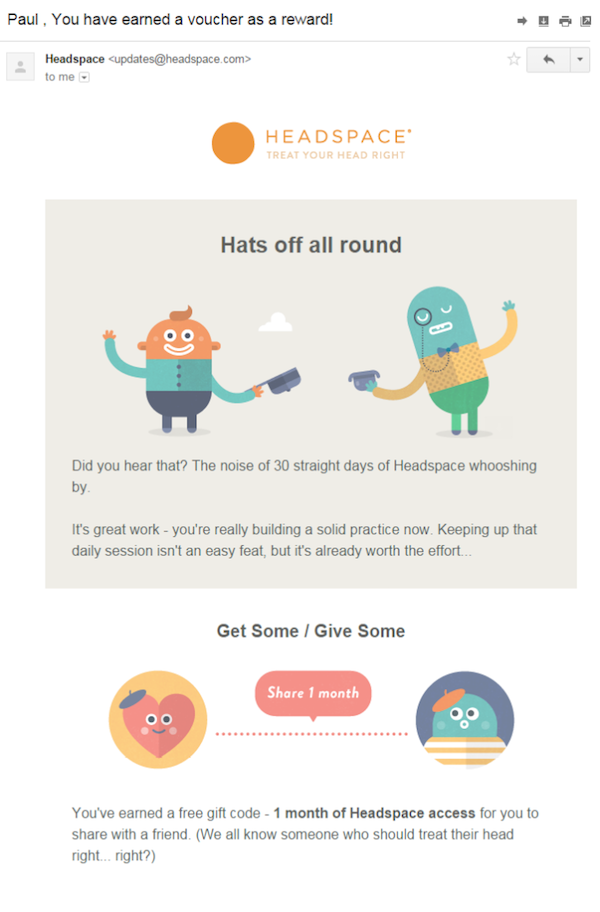
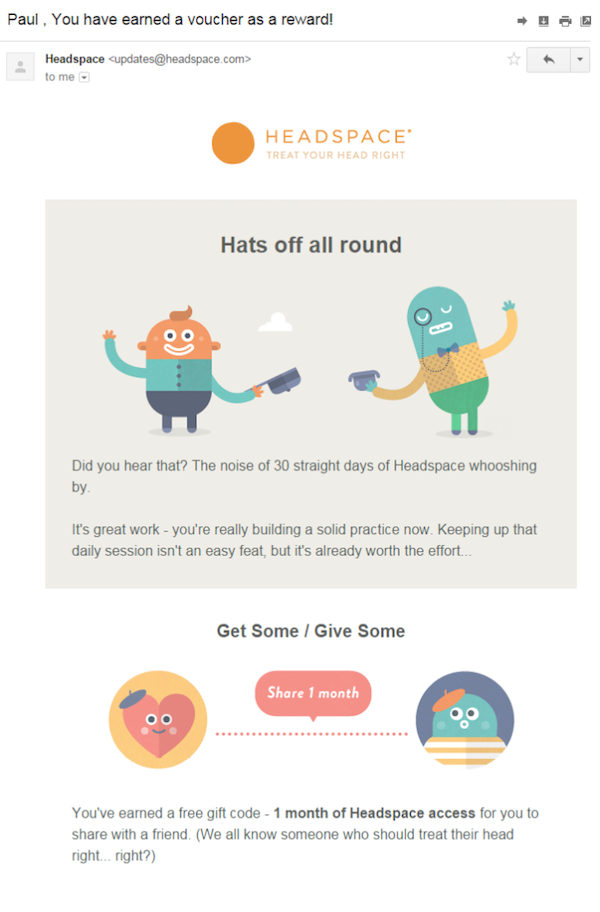
Headspace is one such brand that exhibits sincerity in their brand personality.
2. Excitement
Brands that display excitement will exhibit traits such as spirited content, imagination, and action.
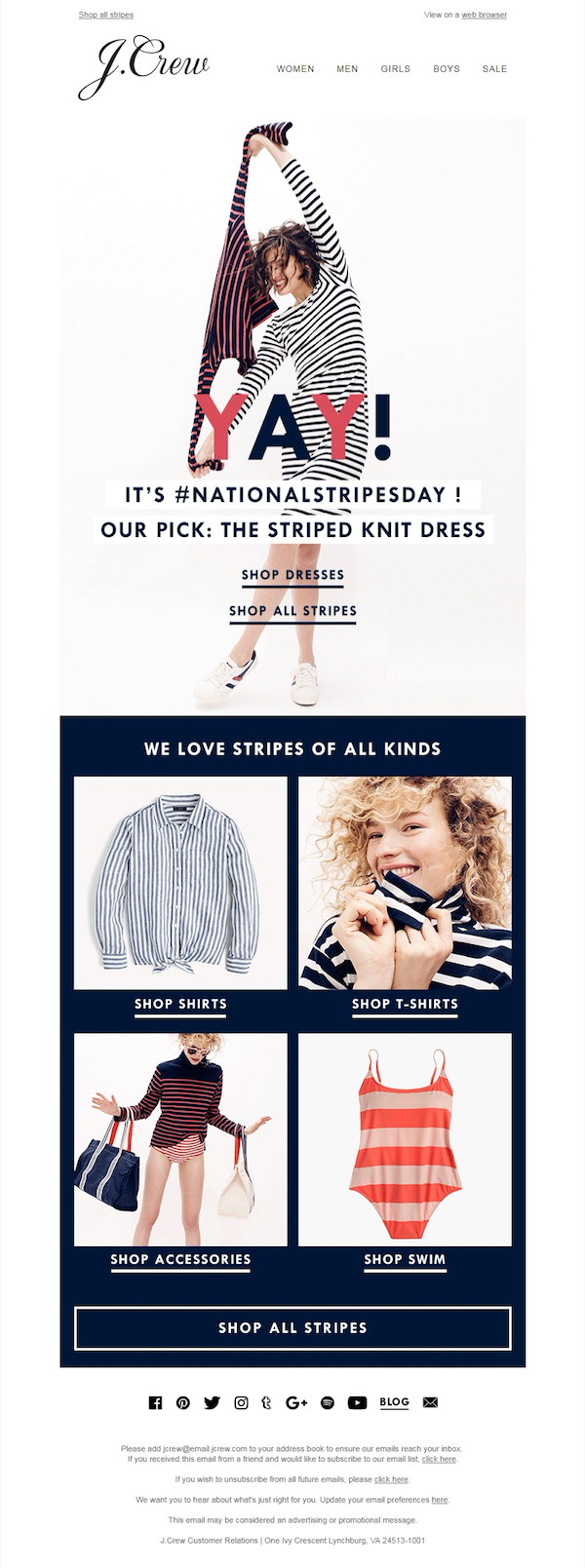
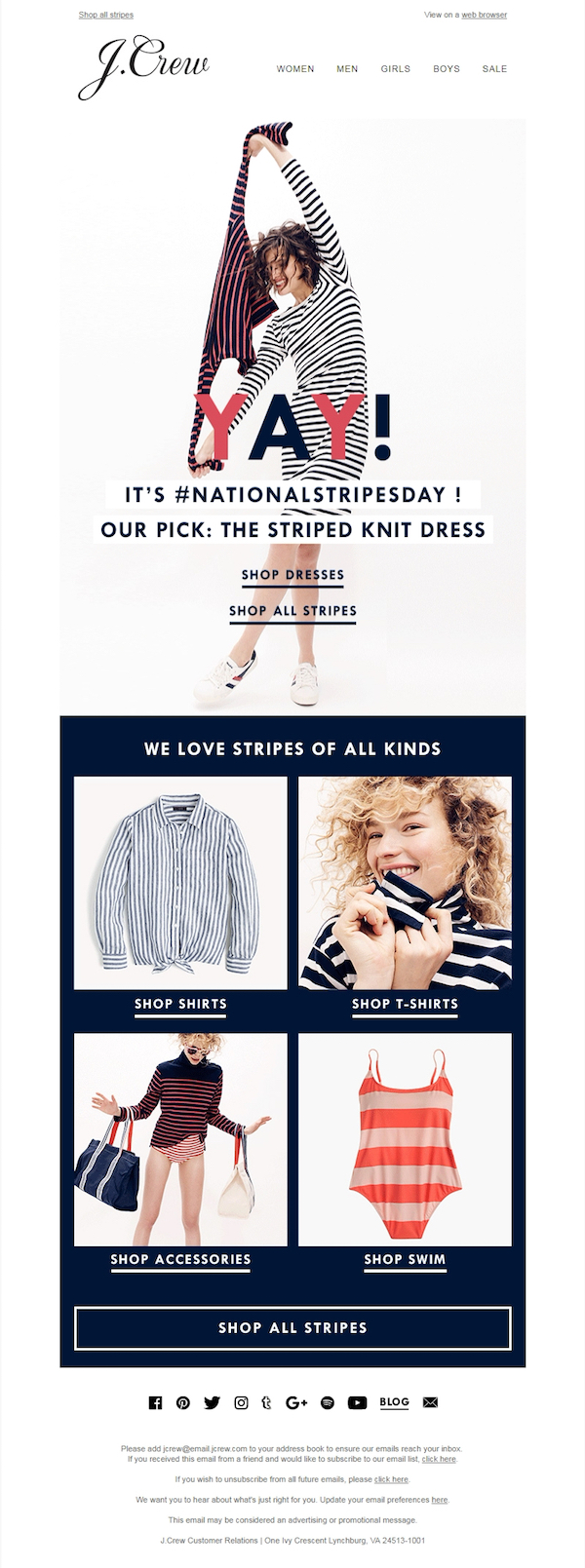
J. Crew uses email elements and email copy that express excitement as its brand personality.
3. Competence
Brands that display competence will exhibit traits such as reliability, intelligence, and success.


With the help of a strong email copy and captivating visuals, the MooPrint newseltter exerts the personality of competence.
4. Sophistication
Brands that display sophistication will exhibit traits such as class and charm.


By using a complementary color palette and striking visuals, the emails from Lexus seem to be in sync with their sophisticated brand personality.
5. Ruggedness
Brands that display ruggedness will exhibit traits such as outdoor-themed images and toughness.


Brands such as Spartan and REI use action images and a color palette that matches their rugged brand personality.
Build Your Brand Personality with These Best Practices
Define a brand tone & voice
As discussed earlier regarding the emotions conveyed by your brand, it is important for your email to have a tone and voice that is consistent with your marketing communication.
That means always using sender names and email addresses that are recognizable as YOU. Avoid using impersonal tactics like noreply email addresses, as these will upset your customers, dilute your brand loyalty, and ultimately hurt your deliverability.
Plan your content
You should always plan your email content in order to personalize the message to your readers. Having a plan will enable you to better target your messages and create the right tone according to where customers are in the purchase cycle.
Once you have the email content done, create a compelling email subject line that clearly conveys the main idea of your email and encourages readers to open. Keep it simple and attractive.
Include a strong call-to-action for your subscribers
Your emails should always communicate exactly what the reader needs to know to get a feel for your brand.
In addition to the content contained in the email, you also need a call-to-action. This button or link should direct the reader to a page with more relevant content. It should also provide a consistent experience and match the brand personality created in the email you sent. You never want your contact to be confused why you sent them away from your email to a page with irrelevant content — so be sure that it matches what they’re looking for.
For best practices, take a look at some email call to action examples.
Adopt a permission-based marketing approach
Nobody likes “foot-in-the-door” marketing. You should always inform your prospects what they are signing up for when they give you their contact information.
Sending an email to a prospect/customer who does not wish to receive emails from you can have severe negative consequences for your brand. Not only can it hurt your reputation and email deliverability, but you could also suffer legal consequences if you’re in violation of the GDPR.
Wrapping Up:
Most marketers tend to overlook the importance of maintaining a clear brand personality in their newsletter or email design. If you’re struggling to find inspiration, take a look at your inbox and check the emails from your favorite brands, or look online to find the best newsletter design examples from other sources.
Hopefully, this article clarifies how you can use your brand personality to better connect with your subscribers by fostering a stronger email brand personality and in turn a stronger brand in general. If you need more inspiration, just check your inbox and find the brands that resonate the most with you!
About the author:


 Deutsch
Deutsch




















